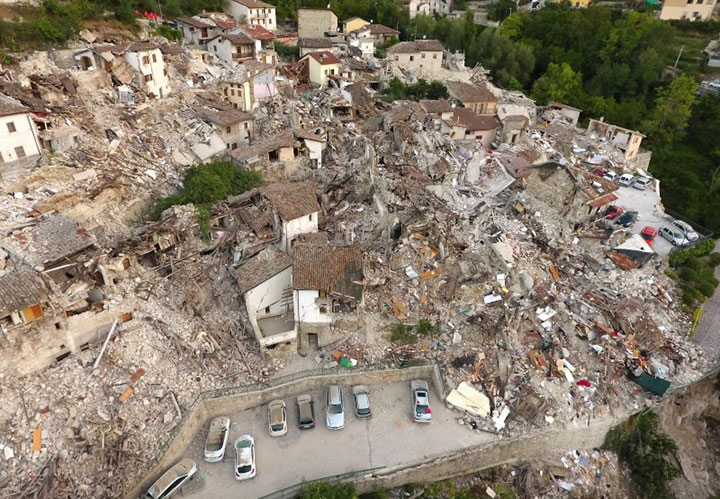While most people think of places like Japan and Chile when it comes to countries that experience frequent earthquakes, Italy also gets its fair share.

According to the U.S. National Oceanic and Atmospheric Administration (NOAA), one of the earliest documented earthquakes in Italy occurred in 1450 BC, a magnitude 7.1 in Lacus Cimini.
READ MORE: Italy earthquake—Rescue efforts continue despite aftershocks
Since then, the country has been rocked by significant and deadly quakes, the worst killing some 78,000 people in 1908 in Messina, Sicily. In 1915, a magnitude 6.7 earthquake in Avezzano killed 32,000 people.
WATCH: The frantic search for survivors of Wednesday’s earthquake in Italy continues but strong aftershocks are threatening rescue efforts. Jonathan Vigliotti reports.
According to Italy’s Instituto Nazionale di Geofisica e Vulcanologia, which monitors earthquakes and volcanic activity throughout the country, over the past 30 years, there have been more than 45 earthquakes measuring a magnitude 5.0 or higher. From the year 1000 to 2006 there were 1700 earthquakes of varying magnitude.
WATCH: A year of earthquakes in Italy (2015)
Italy sits on two tectonic plates, the Eurasian and African, which move about 12 cm a year, making the country one of the most seismically active in Europe. To further complicate things, there is a micro-plate called the Adria at play as well.
READ MORE: Italy earthquake—Timeline of major quakes to strike Italy over past century
The mountain range was formed when the plates continued to collide over time, with one being forced beneath another, a process called subduction. The mountains piled up as a result on top of the smaller Adria micro-plate that sits between the others.
However, there’s more: the Tyrrhenian basin, which lies below the western Mediterranean Sea off the coast of Italy, is spreading.

The earthquake on Aug. 24 was essentially a result of pushing and pulling: the Tyrrhenian basin opened faster than the two plates came together.
It’s this kind of movement that can create powerful earthquakes in that very region. In April 2009, a similar earthquake measuring a magnitude 6.3 occurred in L’Aquila, just 45 km to the south-southeast of the one that occurred this week. It killed almost 300 people, injuring 1,000. More than 55,000 were left homeless.






Comments